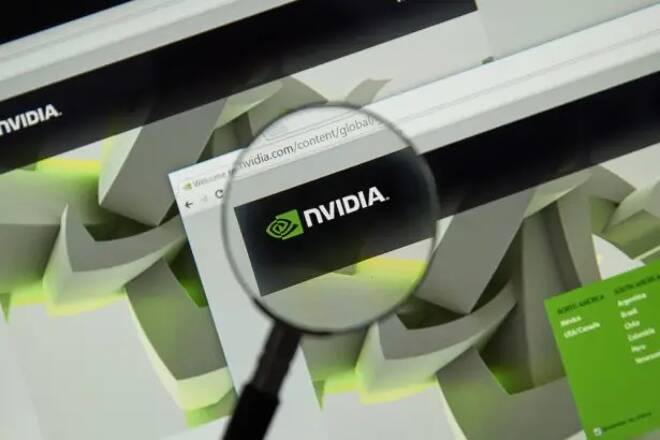Advertisement
Advertisement
Excitement Builds Ahead Of NVIDIA Report
By:
The graphics powerhouse will report Q3 2020 earnings after the close of Wednesday’s U.S. session.
In this article:
NVIDIA Inc. (NVDA) reports Q3 2020 earnings after the close of Wednesday’s U.S. session, with analysts expecting a profit of $1.92 per-share on $4.42 billion in revenue. If met, earnings-per-share (EPS) will mark an 8% profit increase, compared to the same quarter in 2019. The stock closed unchanged after beating Q2 top and bottom line estimates in August but hit an all-time high less than two-weeks later.
NVIDIA Unveils Data Processing Units (DPUs)
The graphics powerhouse has benefited from rollout delays and weak management at Intel Corp. (INTC), taking market share in key semiconductor channels. The company unveiled a new class of processors called Data Processing Units (DPU) at an industry conference during the quarter, characterized as a “an innovative data-center-on a chip that is optimized to offload critical networking, storage, and security tasks from CPUs.”
Needham analyst Rajvindra Gill pounded the tables on the chip set recently, declaring “by offloading tasks to the DPU, the server CPU is optimized and doubles in performance. This leads to a dramatic acceleration in performance, a reduction in the infrastructure, which ultimately leads to lower total cost of ownership for the end customer” He sees major applications in AI in coming years, stating “we believe NVIDIA is at the forefront of this trend”.
Wall Street And Technical Outlook
Wall Street consensus is highly bullish, even though new coverage has been sparse during the quarter. It’s now rated as a ‘Strong Buy’, based upon 26 ‘Buy’, 4 ‘Hold’, and 1 ‘Sell’ recommendation. Price targets currently range from a low of $400 to a Street-high $700 while the stock opened Wednesday’s session about $55 below the median $585 target. There should be plenty of room for upside if NVIDIA beats earnings expectations after the close.
The stock broke out above the 2018 high at 292 in May and entered a trend advance that posted an all-time high at 589 on Sept. 2. Price action then eased into a triangular trading range, with support around the 50-day moving average. Buying interest has remained strong throughout the correction but long-term relative strength readings have flipped into sell cycles, predicting sub-par performance into 2021. That won’t be surprising, given the 126% year-to-date return.
For a look at all of today’s economic events, check out our economic calendar.
About the Author
Alan Farleyauthor
Alan Farley is the best-selling author of ‘The Master Swing Trader’ and market professional since the 1990s, with expertise in balance sheets, technical analysis, price action (tape reading), and broker performance.
Did you find this article useful?
Latest news and analysis
Advertisement
